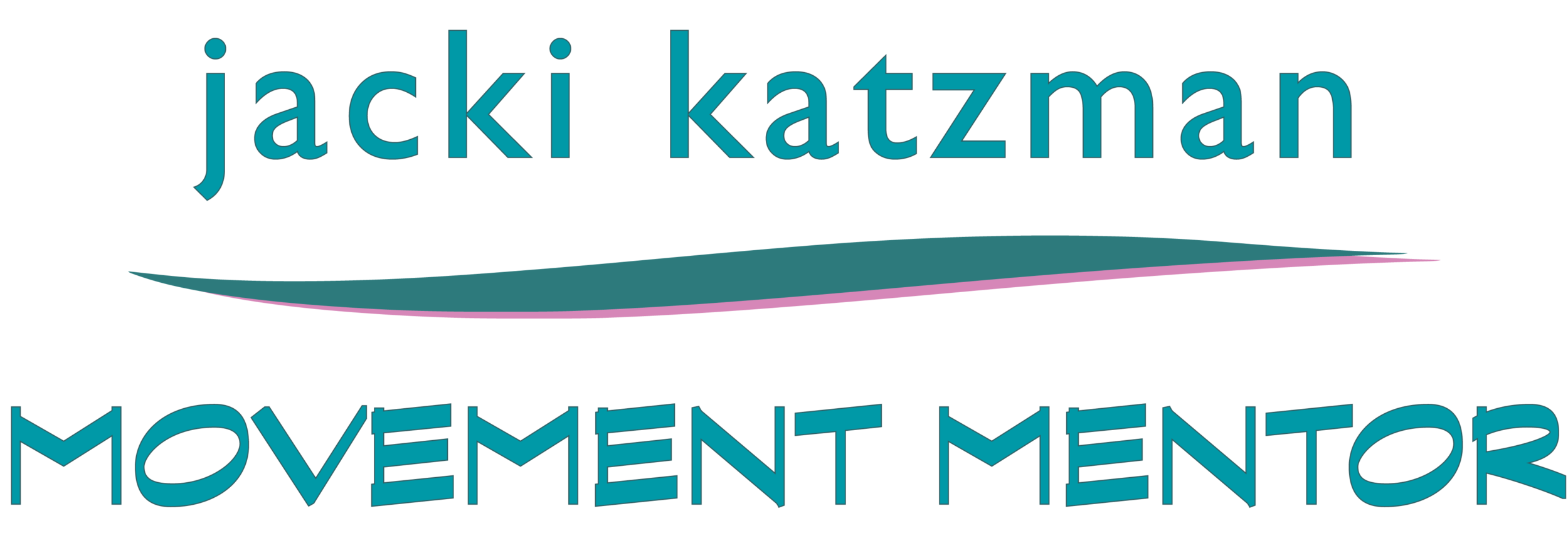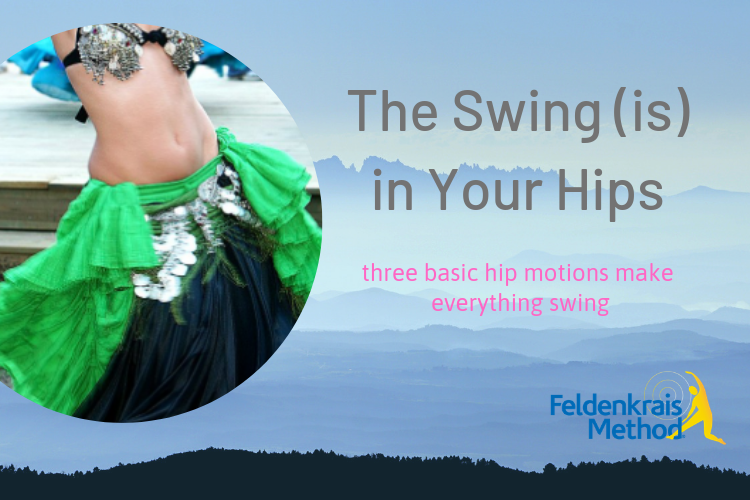The Swing is in the Hips - Breaking hip movements into three fundamental gestures
Hips move in three basic orientations. Lying on your back is an easy way to isolate the basic moves, and play mix and match with them to find whole ranges of motion. So much better than standing, where the weight of your torso and head sitting on the hips muddies the experience.
This lesson breaks down the three basic hip motions: lifting the hip by pressing the same foot into the floor, rolling the hips to one side to lift the other, and pressing the knee in a downward diagonal to open the front of the hip. It’s much easier to do than describe. And that’s what we do in this lesson.
Of course, focusing on the hips doesn’t exclude the rest of the body. When the hips move, the ribs, shoulders, neck, head and arms, and of course the legs, are all involved. I did this lesson before heading down to the lake for a swim. I love cloud-watching while backstroking, and I was flatter on the water, getting more power from my inner legs and longer stretch from my arms.
A mini, 15-second version of this lesson might be: press down with one foot, let the movement lift the same side hip, and travel across your torso to the opposite shoulder. Really pin the opposite shoulder blade to the floor (if you are lying down) or against the back of the chair,
Here’s the full lesson:
1. Scan: thought s and feelings, notice breathing, contact with ground, compare two sides.
2. Bend knees and stand feet, sense where you stand your feet, is that comfortable and do you need to change your feet for comfort
3. Lift R side of pelvis and notice what that’s like. Then lift L of pelvis side. Is one more comfortable?
4. Lift R side again. Notice quality, smooth, jerky, etc., where else do you feel participation, movement. Rest.
5. Lift R side of pelvis by pushing R foot into floor. Change position of standing foot or other foot for more comfort . Rest with long legs.
6. Bend knees stand feet, lift R side of pelvis by rolling the L side of pelvis to floor to the left.
7. Imagine a ribbon tied around R knee and someone pulls ribbon down to the L, which pulls pelvis diagonally. notice changes in ribs, spine. What way is better for you? Rest, long legs.
8. Stand feet, play with all the different above ways of rolling pelvis to L, looking for what feels the nicest. Can you combine the variations? What feels most natural to you?
9. Explore the 3 variations on the left side rolling to right: pushing left foot, rolling right hip, knee drawn to opposite toes
10. With Feet standing, Place L arm diagonally up on floor, palm facing ceiling, elbow on floor.
a. Roll right side of pelvis and lengthen L arm, find the connection to pelvis lifting and arm reaching. Pelvis drives arm. Pause.
b. Lengthen L arm to pull/roll the pelvis. The initiation is from the arm. Hip has to be active, but let the arm start the move.
c. Shift back to pelvis driving the arm.
d. Rest legs long/ How do you make contact, differences
11. Bend knees stand feet L arm diagonally up, lengthen arm by rolling pelvis and look at the L hand. Then look back to ceiling. Notice timing of head turning, pelvis lifting, arm lengthening so it’s all one action. If the parts don’t come together, try slower, smaller. Rest with knees bent.
12. Feel back of head. Stand feet, left arm long, look left. As hip lifts, keep facing left, and slide head back towards right shoulder. Chin moves away from the chest. Keep facing left. Back arcs from pelvis to chest to head. Rest with long legs and arm at side.
13. Same position, R palm is diagonally downward, palm to ceiling. Lift R side of pelvis and lengthen L arm and now include lengthening of the R arm downward. Arms lengthen away from each other.
14. Build up the movement on the left: right arm extends, head turns right, head slides left, left arm slides down.
15. Lift R side of pelvis now and what is that like, how does this compare to beginning, quality…now lift L side of pelvis to compare how it is different to the R / Rest / Notice breathing, contact with floor – differences, how do two sides compare – symmetrical / Roll to side, stand, walk. Reach wit h R arm behind you then L arm, feel differences

